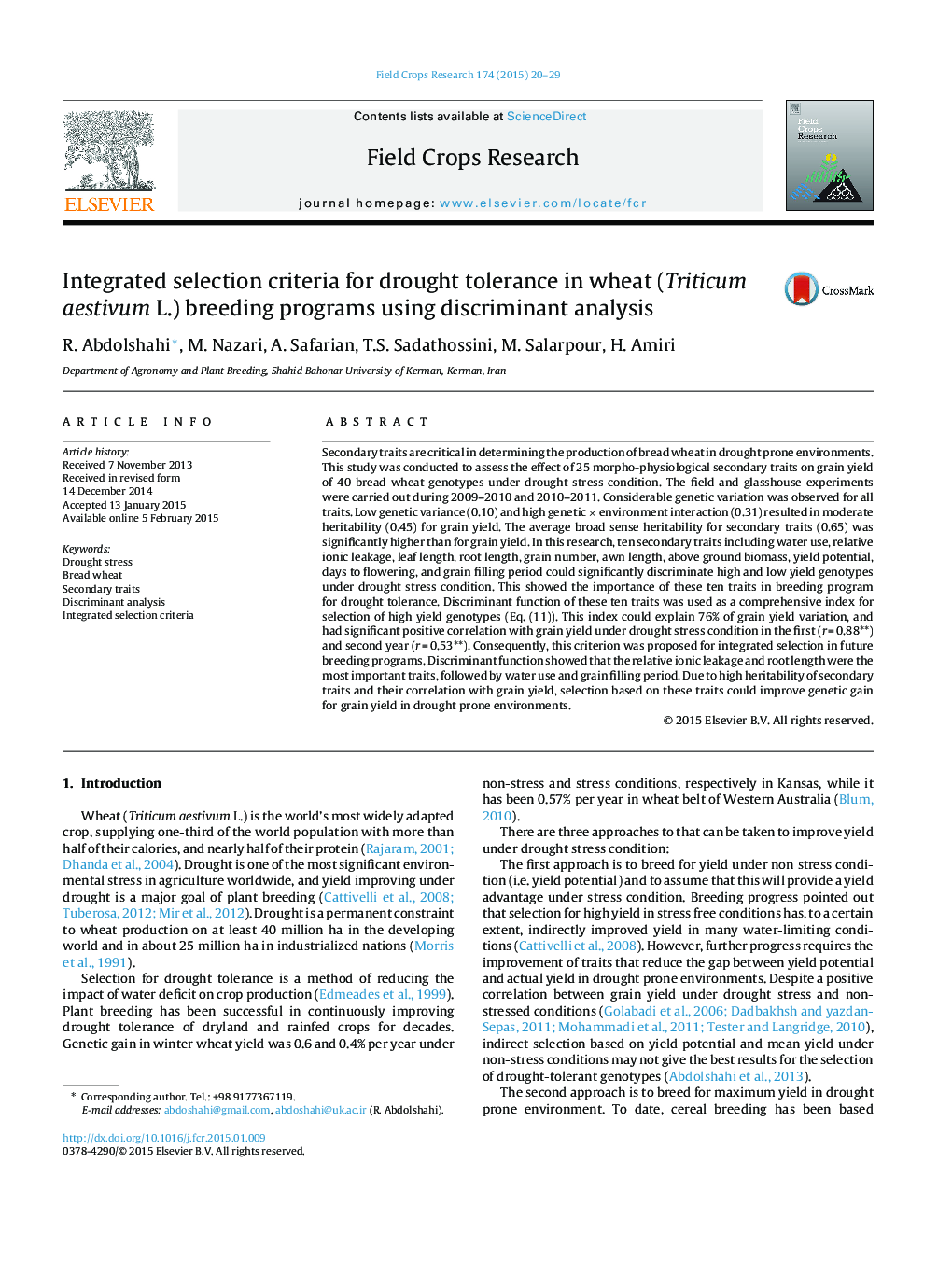| Article ID | Journal | Published Year | Pages | File Type |
|---|---|---|---|---|
| 4509918 | Field Crops Research | 2015 | 10 Pages |
•25 Morpho-physiological secondary traits evaluated. Merely, 10 traits could significantly separate high and low yield genotypes under drought stress condition.•A discriminant function based on 10 traits introduced to select high yield genotypes.•Proposed multivariate criteria could efficiently separate genotypes in 2009–2010 and 2011–2012 with the correct classification rate of 93.3% and 90%, respectively.•Discriminant function showed that the relative ionic leakage and root length were the most important traits.
Secondary traits are critical in determining the production of bread wheat in drought prone environments. This study was conducted to assess the effect of 25 morpho-physiological secondary traits on grain yield of 40 bread wheat genotypes under drought stress condition. The field and glasshouse experiments were carried out during 2009–2010 and 2010–2011. Considerable genetic variation was observed for all traits. Low genetic variance (0.10) and high genetic × environment interaction (0.31) resulted in moderate heritability (0.45) for grain yield. The average broad sense heritability for secondary traits (0.65) was significantly higher than for grain yield. In this research, ten secondary traits including water use, relative ionic leakage, leaf length, root length, grain number, awn length, above ground biomass, yield potential, days to flowering, and grain filling period could significantly discriminate high and low yield genotypes under drought stress condition. This showed the importance of these ten traits in breeding program for drought tolerance. Discriminant function of these ten traits was used as a comprehensive index for selection of high yield genotypes (Eq. (11)). This index could explain 76% of grain yield variation, and had significant positive correlation with grain yield under drought stress condition in the first (r = 0.88**) and second year (r = 0.53**). Consequently, this criterion was proposed for integrated selection in future breeding programs. Discriminant function showed that the relative ionic leakage and root length were the most important traits, followed by water use and grain filling period. Due to high heritability of secondary traits and their correlation with grain yield, selection based on these traits could improve genetic gain for grain yield in drought prone environments.
